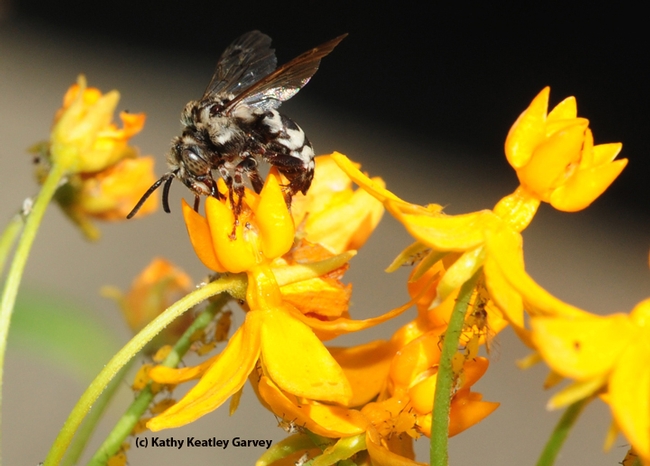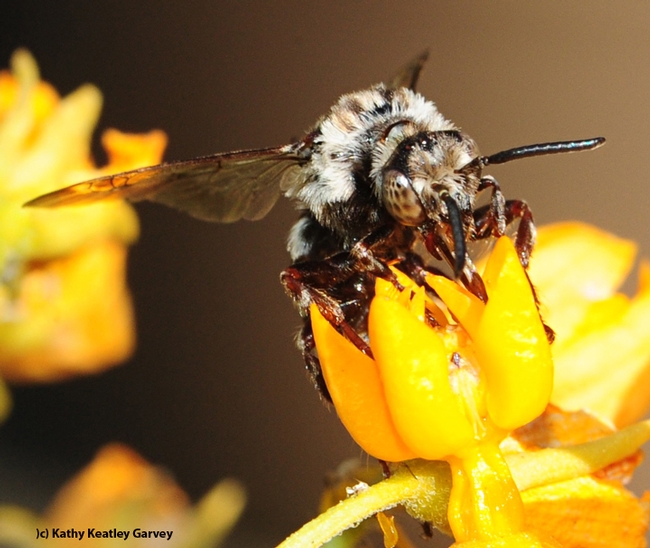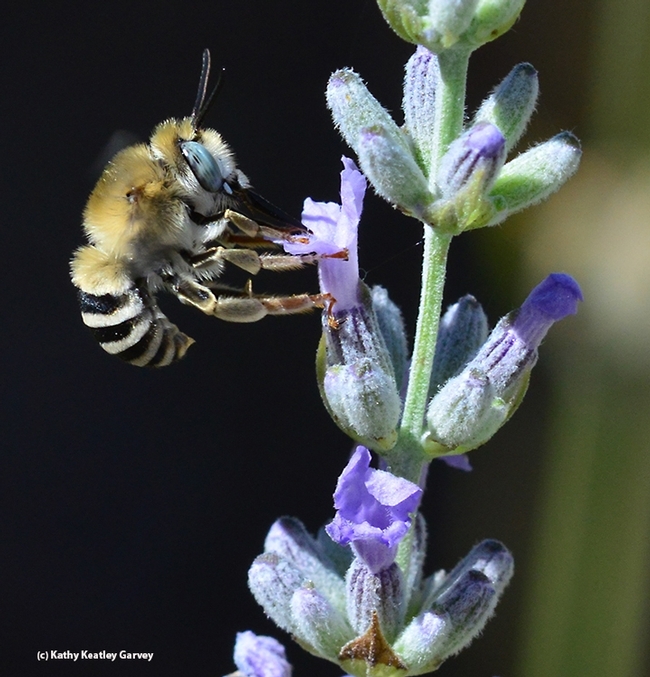- Author: Kathy Keatley Garvey
Ever seen a cuckoo bee?
They're also called parasitic bees or "kleptoparasites" or "cleptoparasitises."
They cannot carry pollen (no apparatus) and do not construct their nests. They lay their eggs in the nests of their hosts and then eat the food meant for the hosts. Or as the late Robbin Thorp, distinguished emeritus professor of entomology at UC Davis, told us: "They eat the provisions, a pollen ball meant for the host offspring, and kill and eat the host larvae."
We've been watching a cuckoo bee, Xeromelecta californica, a parasite of the digger bee, Anthophora, as it forages on the African blue basil.
We've also been watching Anthophora urbana foraging on the basil. When the female leaves her nest to gather more food, the cuckoo bee takes the opportunity to lay an egg in her nest.
Sneaky, aren't they?
Very.
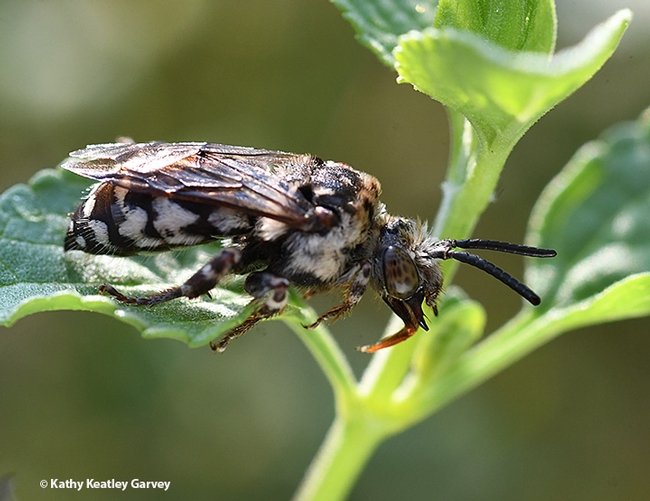
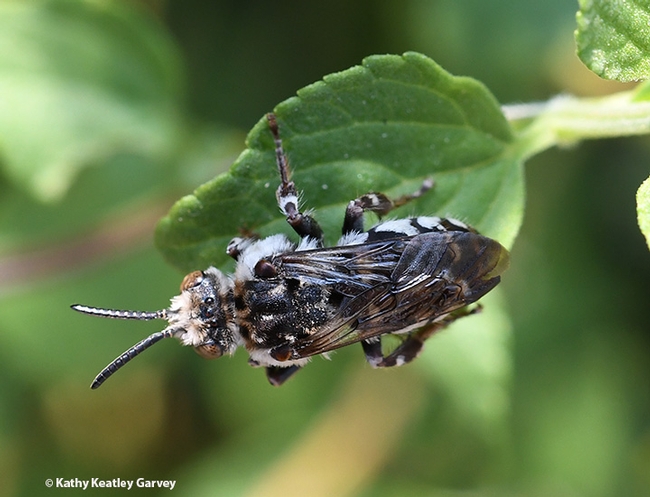
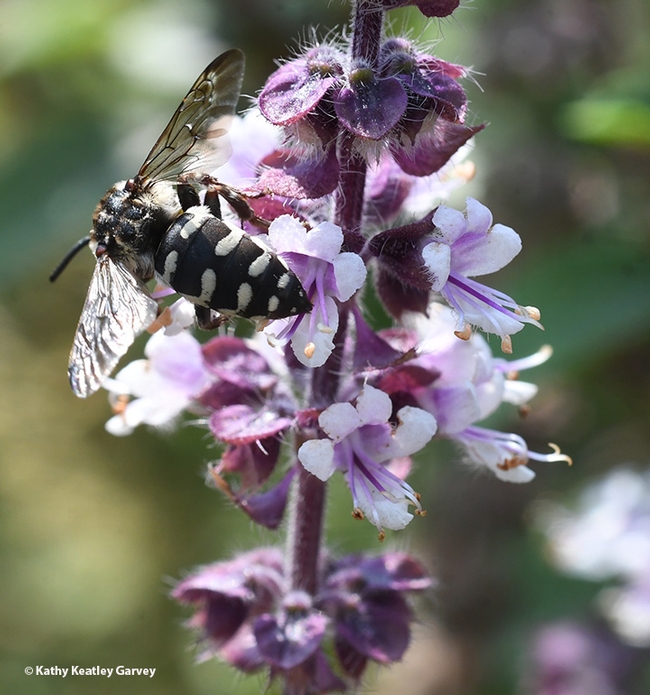
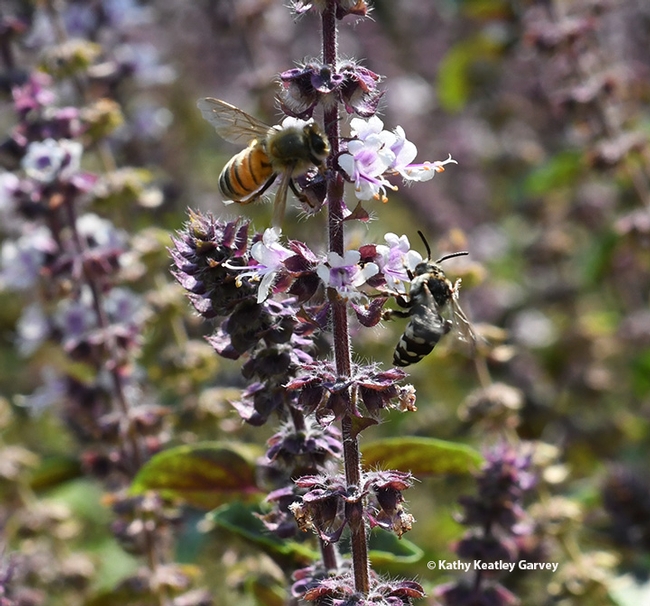
- Author: Kathy Keatley Garvey
You could call it a slacker, a deadbeat, a moocher, a sponger, or a loafer.
Or you could call it a cuckoo bee.
Take the cuckoo bee, Xeromelecta californica, a parasite of the digger bee, Anthophora.
When the female Anthophora leaves its nest to collect more pollen, the female cuckoo bee sneaks in and lays an egg.
"When the host female seals her nest, it seals the doom of her own offspring," distinguished emeritus professor Robbin Thorp of the UC Davis Department of Entomology and Nematology told the crowd at last week's 40th annual Western Apicultural Society meeting, held at UC Davis. They eat the provisions, a pollen ball meant for the host offspring, and kill and eat the host larvae.
The cuckoo bee offspring emerge.
Thorp, co-author of California Bees and Blooms: A Guide for Gardeners and Naturalists, also called attention to their "pointy abdomen" and "wasp-looking appearance."
But they are bees--cuckoo bees. They're also called parasitic bees or "kleptoparasites" or "cleptoparasitises."
They have no pollen-carrying/collecting apparatus, like a scopa, because they don't need any, Thorp said, just as they do not construct their own nests.
If you look around a pollinator garden, you just might sight some cuckoo bees. Last week we saw a Xeromelecta californica (as identified by Thorp and Lynn Kimsey, director of the Bohart Museum of Entomology and UC Davis professor of entomology). It was sipping nectar from a tropical milkweed, Asclepias curassavica.
We've also spotted Anthophora urbana nectaring on our lavender.
One thing's for certain: a cuckoo bee didn't lay its eggs in the Anthophora nest that time or the urbana wouldn't have been there.
